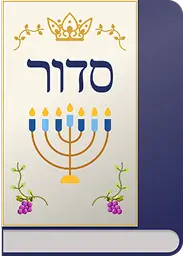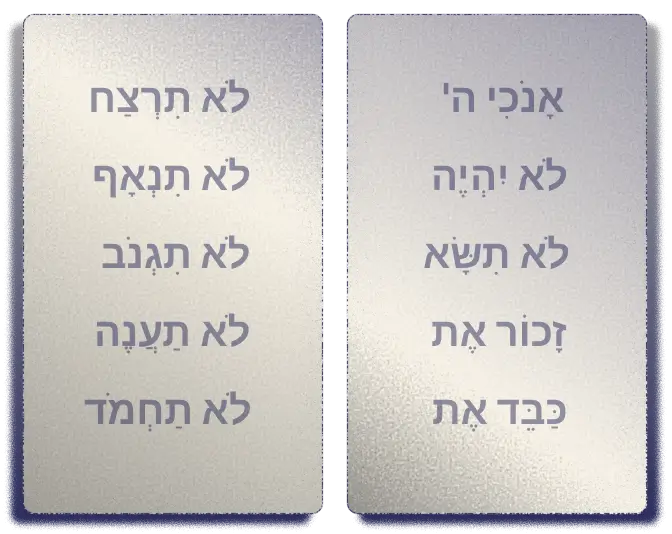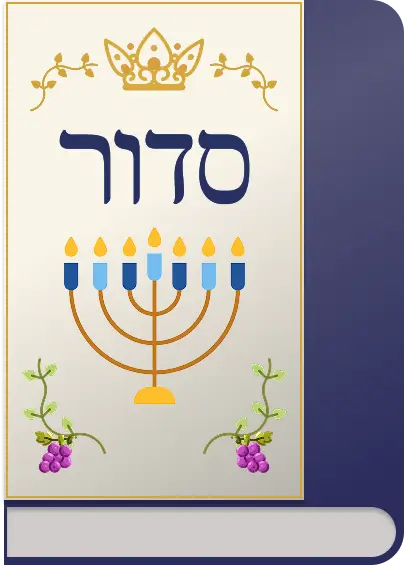

“You shall be holy, for I, Hashem your G-d, am holy.” (Leviticus 19:2)
Ramchal defines Kedushah as a twofold reality—“its beginning is service and exertion; its end is reward and a gift.” (Mesilat Yesharim 26). Human effort separates from coarse materiality and cleaves to G-d; then Heaven responds by resting holiness upon the person. In the terms of the baraita: one who sanctifies himself “a little” from below is sanctified “abundantly” from above. Kedushah thus completes the turn begun in Taharah: purity empties the self of ulterior motive; holiness fills that space with Presence.
For the holy person, even necessary physical acts become offerings: “priests eat and the owners atone” (Pesachim 59b). Ramchal makes this the paradigm—food, speech, intimacy, craft—once aligned to Heaven, rise like sacrifices. The person becomes mishkan/mizbe’ach in miniature; the Shechinah dwells where one lives, not only where one prays. In Kedushah the question is no longer “may I?” (permissibility) but “how does this become worship?” (transfiguration).
Avraham embodies this radiance. His four-sided tent—open to every direction (Bereishit Rabbah 48:10)—turns hospitality into revelation (Genesis 18:1–8). Planting an ’eshel and “calling in the Name of Hashem” (Genesis 21:33) models sanctity that includes: a life arranged so that others encounter G-d through one’s table, words, and ways. In Chazal’s idiom, “the Patriarchs are the chariot”—their lives carry the Divine Presence.
Kedushah is not retreat from the world but elevation within it. Chazal teach: “Sanctify yourself in that which is permitted to you.” (Yevamot 20a) Ramban to Leviticus 19:2 famously reads kedoshim tihyu as disciplined enjoyment—neither abstinence for its own sake nor self-indulgence, but intention that turns the ordinary into worship. Ramchal echoes this: holiness means cleaving to G-d so constantly that using the physical raises the world more than it lowers the soul.
Ramchal’s path (MS 26):
Kedushah is reciprocity: human closeness invites Divine nearness. Ramchal describes a state where one “walks before G-d in the land of the living” even while embodied; the Shechinah’s resting elevates the very matter one touches. From there the soul may be graced with Ruach HaKodesh, the luminous awareness that extends beyond human measure; “Kedushah brings to Ruach HaKodesh, and Ruach HaKodesh brings to Techiyat HaMetim.” (MS 26; Taanit 2a)
Read against Avraham’s narrative, Kedushah becomes recognizable:
Holiness begins with man and ends with Heaven. Taharah removes admixtures; Kedushah makes the world a vessel. Avraham’s way shows that sanctity is not seclusion but radiance—a home, a table, a road that host the Shechinah. In Ramchal’s ladder, this is the threshold where daily life becomes liturgy, and the human being, a dwelling for G-d.
In Part VI we'll trace the integration—where every step before converges, and life itself becomes the vessel of Divine nearness.









Theme: Sanctifying the journey.
Theme: Wrestling toward holiness.
Theme: Holiness under trial.
Theme: Sanctity within prosperity.
Theme: Reconciliation as revelation.
Theme: Holiness enduring within exile.


#194 — Not to eat the sinew of the thigh — Genesis 32:33
In Vayishlach: Yaakov’s wrestling and wound become a perpetual boundary on the body; restraint itself is sanctified as memory of encounter.
Narrative roots: Genesis 32:25–33.
#214 — To fulfill what was uttered and to do what was avowed — Deuteronomy 23:24
In Vayeitzei / Vayechi: Yaakov’s vow at Beit El (“this stone shall be a house of G-d”) and later return to build and purify the place model kedushah through keeping nederim.
Narrative roots: Genesis 28:18–22; 31:13; 35:1–7.
#215 — Not to break oaths or vows — Numbers 30:3
In Vayeitzei: The same Beit El commitment binds Yaakov; holiness matures when word and deed remain one.
Narrative roots: Genesis 28:20–22; 35:1–3.
#6 — To sanctify G-d’s Name — Leviticus 22:32
In Vayeishev / Miketz / Vayigash: Yosef refuses Potiphar’s wife and attributes all success to G-d, elevating Egypt’s palace into a stage for Kiddush Hashem.
Narrative roots: Genesis 39:7–12; 41:16; 41:38–44; 45:5–8.
#7 — Not to profane His Name — Leviticus 22:32
In Vayeishev: Yosef’s rejection of sin “How can I do this evil and sin against G-d?” preserves holiness under pressure—avoiding Chilul Hashem.
Narrative roots: Genesis 39:7–10.
#11 — To emulate His ways — Deuteronomy 28:9
In Vayigash / Vayechi: Yosef sustains and forgives his brothers; Yehudah offers himself—chesed, rachamim, and selichah as the human face of Kedushah.
Narrative roots: Genesis 44:18–34; 45:4–11; 50:19–21; 47:12.
#584 — Respect your father and mother — Exodus 20:12
In Vayigash / Vayechi: Yosef honors Yaakov in life and death—meeting him with tears, ensuring his burial in the land—filial kavod as a vessel for the Shechinah.
Narrative roots: Genesis 46:29; 47:29–31; 49:29–33; 50:7–13.
#587 — Mourn for relatives — Leviticus 10:19
In Vayechi: The seven-day mourning at Goren Ha-Atad frames grief as sanctified time, where love and loss are offered back to Heaven.
Narrative roots: Genesis 50:1–11.

Dive into mitzvot, prayer, and Torah study—each section curated to help you learn, reflect, and live with intention. New insights are added regularly, creating an evolving space for spiritual growth.

Explore the 613 mitzvot and uncover the meaning behind each one. Discover practical ways to integrate them into your daily life with insights, sources, and guided reflection.

Learn the structure, depth, and spiritual intent behind Jewish prayer. Dive into morning blessings, Shema, Amidah, and more—with tools to enrich your daily connection.

Each week’s parsha offers timeless wisdom and modern relevance. Explore summaries, key themes, and mitzvah connections to deepen your understanding of the Torah cycle.